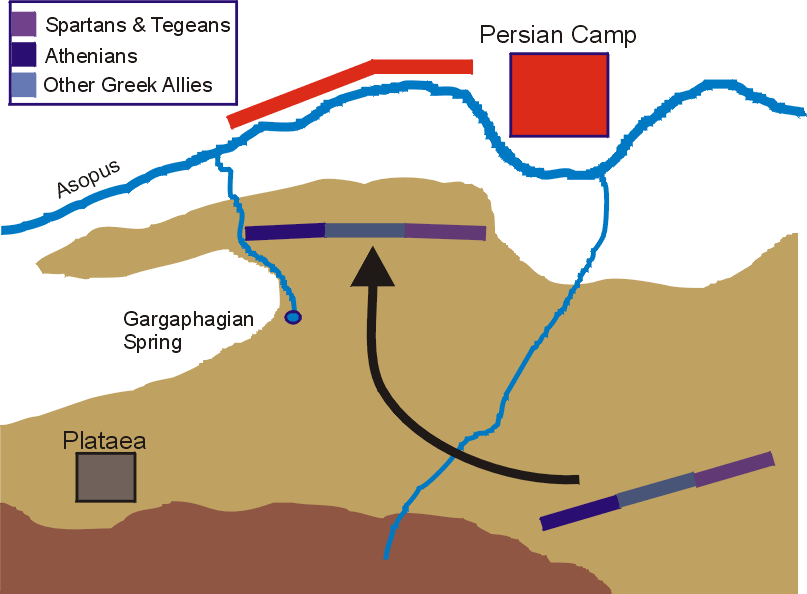Overview
Introduction
The concept of warfare has been an integral part of human history, shaping the course of civilizations and societies. From ancient battles to modern conflicts, the study of tactical and strategic warfare has provided invaluable insights into the art of war. Understanding the historical significance of military tactics and strategies is crucial in comprehending the evolution of warfare and its impact on the world. In the context of international law, the principles of just war and ethical conduct in armed conflicts have been fundamental in shaping the legal framework governing warfare. This article delves into the depths of tactical and strategic warfare, exploring the intricate dynamics of battlefield tactics, siege warfare, military alliances, logistics, and the psychological aspects of war.
Historical Significance
The historical significance of ancient warfare cannot be overstated. It was a time of great upheaval and conflict, where civilizations clashed and empires rose and fell. The tactics and strategies developed during this era laid the foundation for the future of warfare and shaped the course of history. From the disciplined formations of the Roman legions to the cunning maneuvers of the Mongol hordes, each civilization brought its unique approach to the art of war. The development of siege warfare and the use of guerrilla tactics were revolutionary concepts that forever changed the way conflicts were waged. The impact of ancient warfare can still be seen in modern military doctrine and the study of historical battles continues to provide valuable insights into the nature of human conflict and the art of strategy.
Modern Applications
The study of ancient warfare holds profound significance for the contemporary world, offering a treasure trove of timeless wisdom and strategic insights. By delving into the annals of history, we can uncover invaluable lessons that continue to resonate in modern military and geopolitical contexts. From the art of maneuvering on the battlefield to the intricacies of siege warfare, the tactics and strategies employed by ancient civilizations serve as a wellspring of knowledge for today’s military leaders and strategists. Moreover, the principles of ancient warfare are not confined to the realm of armed conflict; they extend to the broader domains of diplomacy, leadership, and statecraft, providing a blueprint for navigating the complexities of international relations and global politics. As we navigate the complex landscape of contemporary geopolitics, the wisdom gleaned from ancient warfare continues to inform and shape our approach to modern challenges, offering a profound understanding of the enduring principles that underpin strategic success.
Tactical Warfare

Battlefield Tactics
Battlefield tactics are the essential maneuvers and strategies employed by military commanders to achieve victory in combat. These tactics encompass a wide range of techniques, including flanking maneuvers, ambushes, and pincer movements. One of the most crucial aspects of battlefield tactics is the coordination and synchronization of different units on the battlefield. This often involves the use of signal communication and command structures to ensure that troops act in unison. Additionally, the deployment of skirmishers and shock troops plays a significant role in disrupting enemy formations and creating opportunities for decisive action. Furthermore, the use of terrain to gain a strategic advantage, such as elevated positions and natural obstacles, is a fundamental aspect of battlefield tactics. The effectiveness of these tactics relies on the ability to adapt to changing circumstances and exploit the weaknesses of the enemy. Successful implementation of battlefield tactics requires a deep understanding of military strategy, as well as the ability to make rapid and informed decisions in the heat of battle.
Siege Warfare
Siege warfare is a military strategy that has been employed throughout history to lay siege to fortified cities and strongholds. This method of warfare involves surrounding the target, cutting off supply lines, and gradually wearing down the defenders through attrition. During a siege, various tactics such as tunnelling, battering rams, and siege towers are used to breach the defenses of the besieged location. Siege warfare requires meticulous planning, patience, and resource management, as it often involves a prolonged standoff between the besiegers and the defenders. The outcomes of sieges have had significant impacts on the course of history, shaping the rise and fall of empires and kingdoms. Understanding the intricacies of siege warfare provides valuable insights into the challenges and strategies of ancient military campaigns.
Guerrilla Warfare
Guerrilla warfare is a form of irregular warfare in which small groups of combatants, such as armed civilians or irregular soldiers, use military tactics including ambushes, sabotage, raids, petty warfare, hit-and-run tactics, and mobility to fight a larger and less-mobile traditional military. This type of warfare is particularly effective in rugged terrain and dense vegetation where conventional military forces find it challenging to operate. Guerrilla warfare has been a key element in many strategy games older than Age of Empires, showcasing the strategic and tactical ingenuity required to outmaneuver larger, more powerful adversaries. The use of unconventional tactics and the ability to adapt quickly to changing circumstances make guerrilla warfare a timeless and relevant aspect of military history and modern conflict.
Strategic Warfare

Military Alliances
Military alliances have played a crucial role in the history of warfare, shaping the outcomes of conflicts and influencing the balance of power among nations. By forming alliances, military forces have been able to pool resources, share intelligence, and coordinate strategic maneuvers to achieve common objectives. The concept of military alliances dates back to ancient civilizations and has been a recurring theme in the annals of warfare. From the Greek city-states to the alliances of the Roman Empire, the strategic importance of forming coalitions for mutual defense and expansion has been evident throughout history. Strategic principles in Sun Tzu’s teachings also emphasize the significance of alliances as a means to gain advantage and outmaneuver adversaries. These principles stress the importance of understanding the dynamics of power and influence, as well as the art of leveraging alliances to achieve strategic goals.
Logistics and Supply
Logistics and supply are the lifeblood of any military campaign, and throughout history, logistics have played a crucial role in determining the success or failure of military endeavors. From the ancient empires to modern-day armed forces, the ability to efficiently move, store, and distribute supplies has been a decisive factor in the outcome of wars. In the context of strategic warfare, logistics encompass a wide range of activities, including transportation, procurement, maintenance, and distribution of resources. The challenges in Gaza present a contemporary example of the complexities involved in maintaining effective logistics and supply chains in hostile environments. Without proper logistics and supply, even the most well-planned strategies can falter, and the morale of troops can be severely impacted.
Psychological Warfare
Psychological warfare is a form of warfare that involves the use of psychological tactics to demoralize, intimidate, and manipulate the enemy. It is a subtle yet powerful aspect of warfare that can have a significant impact on the outcome of a conflict. The use of propaganda, misinformation, and fear tactics are common strategies employed in psychological warfare. Military tactics in psychological warfare often involve the dissemination of false information to confuse and disorient the enemy, leading to a breakdown in their morale and decision-making. This form of warfare targets the enemy’s mind and emotions, aiming to weaken their resolve and ultimately gain an advantage. Psychological warfare requires a deep understanding of human psychology and behavior, making it a complex and intricate aspect of strategic warfare.
Conclusion

Lessons Learned
Throughout history, the concept of strategy has played a pivotal role in shaping the outcomes of wars and conflicts. The ability to devise effective strategies has often determined the success or failure of military campaigns. Whether it’s the strategic positioning of troops on the battlefield, the implementation of supply chain strategies, or the orchestration of psychological strategies to demoralize the enemy, the art of strategy has been a constant presence in warfare. Understanding the nuances of strategy is crucial for drawing valuable lessons from historical military endeavors. By analyzing the strategies employed by ancient generals and leaders, we gain insights into the timeless principles of strategy that continue to influence modern military thinking.
Relevance Today
In the modern era, the study of ancient warfare holds immense relevance in understanding the evolution of military tactics and strategies. The lessons learned from historical battles and campaigns provide valuable insights into the complexities of warfare and the ever-changing nature of conflict. Moreover, the application of ancient tactics and strategies in contemporary military operations has been a subject of great interest and research. From the utilization of terrain in guerrilla warfare to the principles of logistics and supply chains in strategic planning, the influence of ancient warfare on present-day military thinking is undeniable. As we delve deeper into the Buehrle Collection of historical military manuscripts, we uncover hidden gems of knowledge that shed light on the enduring principles of war and their relevance to modern times.
Future Implications
The study of ancient warfare provides valuable insights into the evolution of military tactics and strategies. As we look to the future, the lessons learned from historical battles and campaigns continue to hold relevance in shaping modern military doctrines and policies. The emergence of new technologies and geopolitical shifts may alter the landscape of warfare, but the fundamental principles of strategy and tactics remain rooted in the annals of history. Furthermore, the examination of historical fascism serves as a cautionary reminder of the destructive potential of extremist ideologies in the realm of warfare, prompting a critical evaluation of ideological influences on strategic decision-making.
Avid Writer with invaluable knowledge of Humanity!
Upcoming historian with over 30 million views online.
“You make your own life.”





